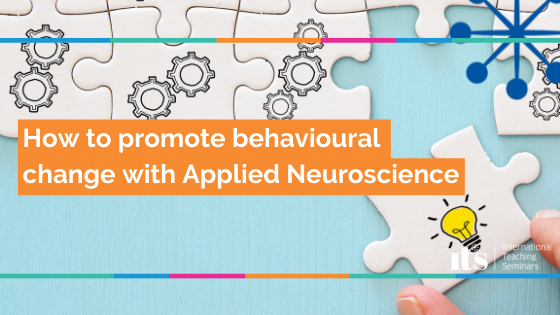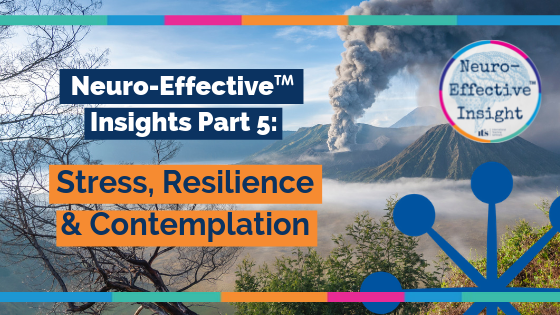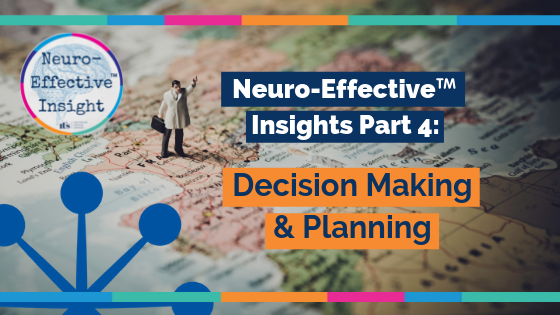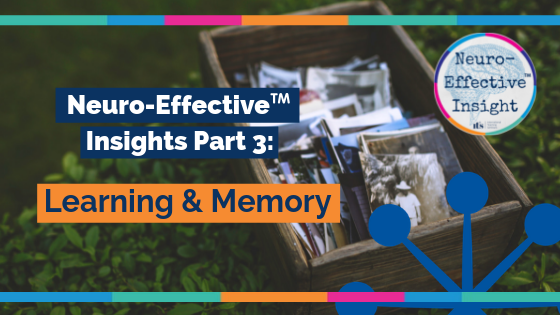Here are two different scenarios that may benefit from behavioural change. Try them both on for size…
“Tea, bread, darn it… what else did I need? Oh I wish I remembered things better!”
And what about this…
“We need to come up with a new solution, but my team never comes up with any good ideas..!”
These are just two hypothetical examples that most of us can relate to. They depict a time when we feel like our brains have failed us. This is a pity.
We are here to tell you that there is another way… That you can create more behavioural change with Applied Neuroscience.
Like a mechanic working on a car, they understand how the engine runs and can make additions to it for the system to run more smoothly.
So imagine you are the mechanic, the brain is the car and Applied Neuroscience is the User’s Guide to the brain. Applied Neuroscience offers both understanding and practical how-to to promote behavioural change for things like memory and creativity as well as emotional regulation, motivation, decision making and so much more.
This is so, because when it comes to our brains, this organ is the driving force behind our thoughts, emotions and behaviours – we are the puppet and our brain is the master.
So if you understand more about why and how you do the things you do with Applied Neuroscience (and to continue the car analogy) then simply put you are the one in the driving seat.
A process for behavioural change
Before we get to CHANGE, here is a simple process that allows for transition to occur:
- First we need ‘self awareness’ – what are the things I want to change?
- Lead by ‘understanding’ – why am I doing these things?
- Which is then followed by ‘choice’ – what could I be doing instead?
- Then the last step is the ‘how’ – How can I make these changes?
Applied Neuroscience offers insight for every step of this process.
“I just can’t remember things”
Desired behavioral change: Improved memory to retain new learning.
There are different types of memory used to store different types of information and memories. Being aware of the types of things you are forgetting may help you spot a pattern. Reflecting on your current strategies will also give you an understanding on what you do and might make you think of some better options
To show you how Applied Neuroscience can help we have listed 6 different brain insights against two common types of behaviours – memory and creativity:
1: Be curious:
Research shows us that learning whilst adopting a curious mindset activates our dopamine reward centers in the brain, which makes us feel good. When we feel good about learning then we are more motivated to learn and more likely to remember.
Takeaway: Approach learning with an open mind and wonderment.
2: Learning states:
The part of the brain that stores memory (hippocampus) sits right next to one of our centers of emotion (amygdala), which effectively gives you two sorts of memory. Memory for things that repeat and memory for things that are emotional. If you have emotion invested for the things you are learning it intensifies the experience.
Takeaway: Remember why you are investing in your learning and the benefits it will give you to create more of an emotional attachment to what you are doing.
3: Believe you can remember:
Neuroplasticity tells us that you can continue to learn throughout your life no matter your age. Committing to the idea that you have a good memory is developed like a muscle in the gym, so the more you approach a situation believing you have a good memory the stronger this will become.
Takeaway: Stop telling yourself you have a bad memory, because you will make yourself right.
“I’m not very creative”
Desired behavioral change: a greater expression of creativity
It’s common to think that creativity is measured by whether you can paint or draw. But this is not the case there are many types. In fact we believe you are likely to be a lot more creative than you think!
4: What is creativity anyway…
Research shows us that creativity requires activation across both brain hemispheres: the right (the side for novelty, broad attention) and the left (the analytical side and is responsible for predictive memory). This is because creativity comes in many forms like in the way you problem solve or your resourcefulness. When you identify the different ways your brain is creative, it helps you to expand upon them to strengthen your skills.
Takeaway: Consider all of the ways you are creative outside of the typical definition of creativity.
5: Psychological safety:
Unless members of an organisation/team know that it is safe to come up with, and try out, new ideas, then creativity will be suppressed. A good way to establish the best mindset for creativity is to encourage the most bizarre suggestions to bubble up first. The next step in the process is to narrow down options, drilling down into the best option.
Takeaway: Live by the mantra “there is no such thing as a bad idea”.
6: Change your location:
Our brains like novelty, find somewhere new to do your creative thinking. A new environment offers new stimulus and a ‘creative reset’ within, in turn this can offer new opportunities for you to think of a solution and new ideas that you may not have previously considered.
Takeaway: Invigorate your creative mindset with a fresh new setting.
Final takeaway for more behavioural change
So what are you going to do differently to boost your memory and creativity?
Behavioural change is there for the taking if you want it and hopefully having read this blog you are left knowing that it is more possible than you did before.
We know this because research tells us that our brains can change easily, which in fact it’s what the brain is designed for – to adapt to new environments, and to learn new skills and to remember new information.
It does this by building new synapses (connections between brain cells) and/or new neurones (brain cells) EACH and EVERY minute of EACH and EVERY day.
When you think of it, this is pretty incredible to think of what behavioural change you are capable of if you put your ‘mind’ to it.
If you want to learn more about your brain and practical how-tos to promote behavioural change then our ‘Applied Neuroscience Programme’ will have a lot to offer you.
Or if you want to learn more about how the brain likes to learn then the ‘Neuroscience of Learning’ blog is for you.





Leave A Comment